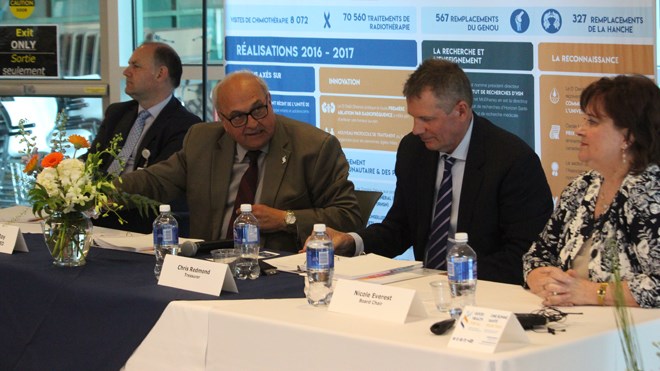Health Sciences North continues to struggle with overcrowding and an increased number of Alternate Level Care (ALC) patients, as the board reported a $7.13 million deficit for the 2016/17 fiscal year.
The HSN board held their annual general meeting on June 15, and the common thread among those who spoke of the past year was the word "challenging".
The hospital saw a large spike in the number of ALC patients in 2016, with the average number of patients sitting at 106, up 27 per cent. For most of 2016/17, HSN was in a state of overcapacity, due to a 27 per cent increase in the number of Alternate Level of Care patients in hospital beds.
These high levels of unfunded capacity resulted in an operating deficit for HSN of just over $7 million.
Measures are being taken to reduce the number of ALC patients, and HSN vice president of patient services David McNeil has said that getting that number down to 75 could save the hospital as much as $3.5 million.
Occupancy rate at HSN was up 2.5 per cent over last year, and as of March 2017 was at 107.7 per cent.
"Balancing quality and cost-driven health care is becoming increasingly challenging," said HSN board treasurer Chris Redmond, who presented the hospital's 2016/17 financial report.
"HSN is focused on delivering quality care, but increased demand on our hospital services is significantly the cost of our operations. The ALC issue is not one that HSN can solve alone, it requires system-wide thinking and community care based solutions."
As a result of the increased number of ALC patients, the average length of stay at HSN increased by 3.2 per cent over last year, up to 6.31. days.
“Both our human and financial resources are being stretched to their limits dealing with greater demand for hospital services,” said HSN board chair Nicole Everest.
“When you are operating at 115 to 130 per cent occupancy, you incur higher staffing and supply costs. We do not receive extra funding for this high volume of activity. Unfortunately, operating in a state of overcapacity has become the new normal, not only for HSN, but for hospitals across Ontario."
It was a busy clinical year at HSN as well as the Emergency Department managed 74,000 visits, which is a a new record. There were more than 24,000 admissions to hospital and 32,600 surgeries.
